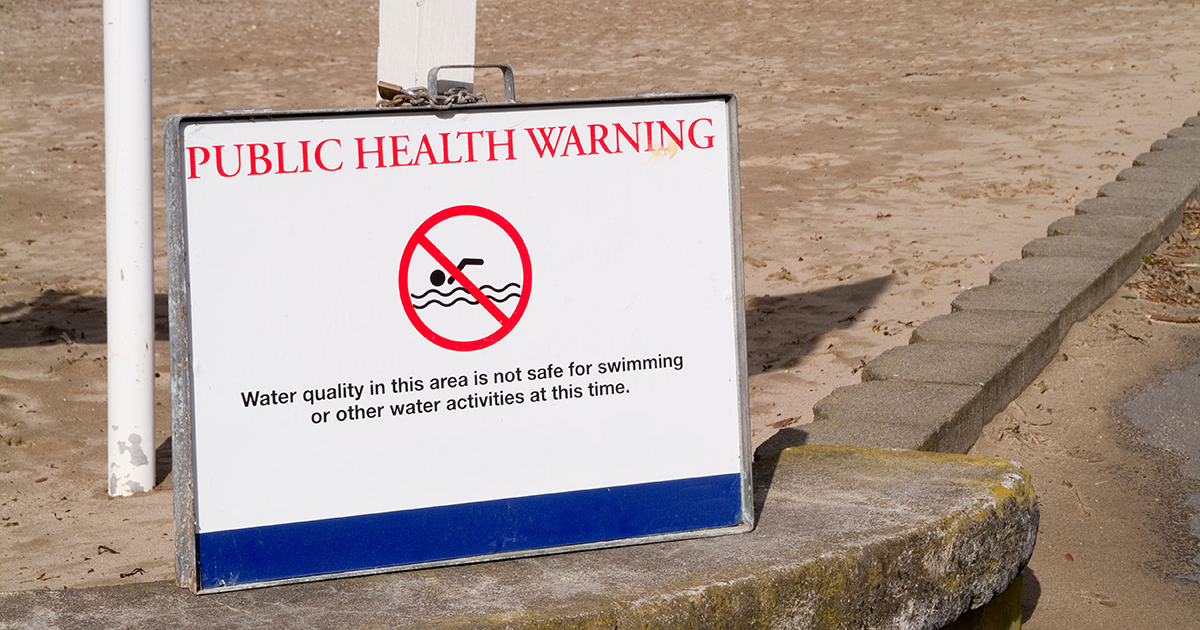How To Treat & Prevent Swimmer's Itch
Cercarial dermatitis, or swimmer's itch, is an allergic reaction to exposure to a parasite commonly found in areas of salt and freshwater. The parasite is primarily carried by birds and other mammals, but can also contaminate water through the presence of snails. The parasite can cause a rash and blisters in humans, which can occur within one hour of exposure to contaminated waters. Most cases of swimmer's itch do not require medical intervention and can be treated with at home remedies. However, frequent exposure to the parasite and occurrences of swimmer's itch does make the body more sensitive to the parasite, making swimmer's itch harder to treat after multiple occurrences. Learn specific options for treating and preventing swimmer's itch now.
Dry Off Immediately After Swimming

One of the primary things an individual can do to prevent swimmer's itch is to dry off immediately after swimming. While swimming in contaminated water, the parasite that causes swimmer's itch can latch onto the skin. Drying the skin immediately after swimming with a towel or cloth can detach any parasites that may be latched to the skin before they have a chance to burrow further in and cause the uncomfortable swimmer's itch symptoms. It is also advisable to rinse off before drying, using a public shower or water hose. The additional pressure from the shower spray working in tandem with the drying motion of the towel can provide the maximum benefit.
Continue for more on treating and preventing swimmer's itch now.
Take Warm Baths With Baking Soda

The rash that accompanies swimmer's itch can be itchy, and it can be tempting to scratch. However, scratching is not advised, as it can cause small tears in the skin increasing the risk of infection. Individual's with swimmer's itch may find some relief if they take warm baths with baking soda. The itch individual's experience is typically due to inflamed skin. Baking soda helps to reduce inflammation, thus providing soothing relief. A baking soda bath can be made by combining a half cup to one cup of baking soda into a tub full of water. This particular remedy can be repeated two to three times per day until the itching and rash subside. Alternatively, a baking soda paste can be made by combining one to two tablespoons of baking soda with water until it forms a paste, which can be placed directly on the rash for relief.
Get to know more treatment and prevention options for swimmer's itch.
Apply Cool Compresses

Because of the fact the itch and irritation associated with swimmer's itch are caused by inflammation, it can be beneficial to apply cool compresses to the areas affected by the parasite and allergic reaction. Cool compresses can be made by running a washcloth or other soft cloth under cold water, wringing out the excess water, folding it, and then applying it to affected areas with light pressure. This will help to reduce the swelling and irritation of the area and decrease symptoms. Using an ice pack or cold pack is not advised, as the cold can actually cause further damage to the already irritated skin. Cool compress treatments can be repeated several times a day until the rash and other associated symptoms have dissipated.
Learn more about preventing swimmer's itch now.
Check For Public Health Warnings At Beaches

Individuals concerned about contracting swimmer's itch should check for public health warnings at beaches before swimming in the water. Many, but not all, beaches will post signs in the area if a case (or cases) of swimmer's itch has been reported as a result of swimming in local waters. Since not all beaches will post signage warning swimmers of contamination risk, it can also be helpful to talk with other visitors to the beach as well as health officials and park representatives about the conditions of the water before swimming. If there is no signage and no one can provide information regarding the health of the water, a good rule is to avoid swimming in areas with abundant shrubbery and weeds, as these areas attend to attract snails and other wildlife that carry the parasite, increasing the risk for contamination.
Get to know more about preventing swimmer's itch by continuing to read now.
Apply Waterproof Sunscreen Before Swimming

One way to prevent the occurrence of swimmer's itch is to apply waterproof sunscreen before swimming. Sunscreen provides a protective cover the skin, preventing the parasite from latching to the exposed skin. It is imperative that the sunscreen is applied before entering the water and parents of young children are advised to apply the sunscreen to make sure the skin is fully covered and protected. There are brands on the market that state their usage is specifically for a combination of swimmer's itch prevention and sun protection. However, no information suggests these products work better than simple waterproof sunscreen. When in doubt, individuals can discuss which products to use with their physician before swimming.